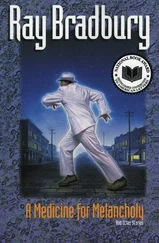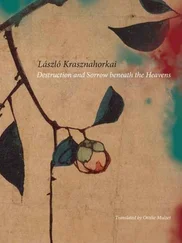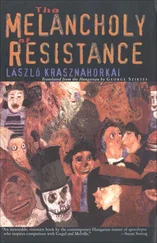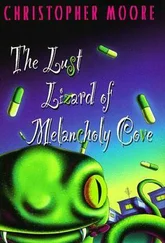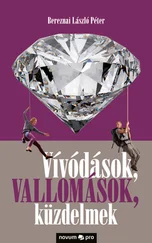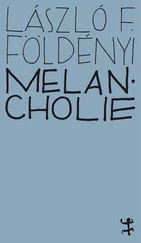Religio Medici
, pt. 1, sec. 44). Death fills melancholic Browne with negative pride: he is not proud of one thing or another (after all, he is aware that death reigns supreme over everything), but rather, like the protagonist of Dostoevsky’s
Notes from Underground
, he is proud there is nothing
that would fill him with pride. The
death-irony
that is inherent in Socratic
knowledge
-
irony
unfolds in the melancholia of the modern age: knowledge means coming to terms with death, and death is a definitive obliteration not just of the body but also of the spirit. The seventeenth-century poet William Davenant writes as follows in his poem “To a Mistress Dying”:
But ask not bodies doom’d to die
To what abode they go;
Since Knowledge is but Sorrow’s spy,
It is not safe to know.
Knowledge is a harbinger of mortality: the greater the knowledge, the stronger the constant feeling of extinction. We know from astrological explanations of melancholia, however, that great knowledge, profound contemplation, and fear of obliteration are especially characteristic of melancholia. And melancholia, so antiquity teaches, is no stranger to irony, for knowledge that death is omnipresent yields the most diabolical irony. “The hour of dying,” writes Rainer Maria Rilke in a letter, “is only one of our hours and not exceptional. Our being is continually undergoing and entering upon changes that are perhaps of no less intensity than the new, the next, and the next again, that death brings with it” (11 November 1909, in
Letters of Rainer Maria Rilke, 1892–1910
, 353). And another opinion, one that sets off the irony even more, from the pen of Miguel de Unamuno: “True life nourishes itself on death and renews itself second by second, in continuous creation. A life without any death in it, without any unpiling in its continual piling up, would be a perpetual death, the repose of a stone. Those who do not die do not live; those who do not die at every instant, to rise from the dead on the instant, do not live” (
Our Lord Don Quixote
, 174–75).
Irony refers to the aforesaid negative pride, and that, in turn, stems from recognition of the possibility of death as a negative possibility. But just as melancholics both relish and despise the world, death also has two faces: it is at once attractive and frightening. Fear of death and a wish for it arise from the same base: a desire for conquest of the universe and for infinity is unwilling to take account of death, but perpetual futility and failure cause so much pain that only death can bring relief. It is not a matter of two states alternating with each other. Melancholics do not typically shake with fear one minute only to long for it the next, but simultaneously feel both one way and the other. Galen wrote that melancholics doubt death yet also long for it. And Sir Thomas Browne wrote: “I can with patience embrace this life, yet in my best meditations do often defie death” ( Religio Medici , pt. 1, sec. 38; manuscript versions and the first printing [1642] have “desire” for “defie”). What sets off melancholia from all other bodily and mental states is precisely that it makes a person capable of this ambivalent way of looking at things, which, in the modern age, leaving words and brushstrokes behind, freezes melancholics among the notes of music .
It is hard to separate the creation of a world from the creation of a work of art in the case of the Renaissance melancholic: in its own way, shaping a life is just as much an art as painting a picture or writing a poem. Completing a work of art is just as much an elemental world creation as an attempt at world conquest. Since this experiment is, ultimately, doomed to failure, it is not surprising that creating a work of art must also end in failure. Such failure was technical in only a few cases (including those in which the work remained unfinished); the true failure could be discerned much more in the profound sorrow that lies behind many outstanding works of art of the modern era. The greater the technical perfection, the more prominent the sadness. One has a feeling not only that (even in works on religious subjects) God has been squeezed out of creation, having been changed into a compositional element, but also that the creator was unable to take over God’s “role” in a satisfactory way. He made a start on creation, but proved unable to create everything , to satisfy every point of view — what distinguishes a work of art of the modern era from a medieval work is, above all, the lack of a multidimensional perspective. (Think of the apparent illogic that characterizes epic literary works of the Middle Ages. In the plots of those works, linearity, the logic that presents individual arbitrariness as a world principle, falls flat; one might also call to mind the lack of perspective in medieval painting, which, in fact, amounts to taking all points of view.) Works of art in the modern era take a single point of view (perspective), and the resignation that has defined art from paintings of the Renaissance era onward springs from the impossible undertaking of a solitary creative artist, possessing one point of view, manifestly trying to produce a work that satisfies every viewpoint. A work of art would like to be a universe; however, a creative artist is not God but a mortal man; creating a universe on Earth is rather like pulling oneself up by one’s bootstraps. And even if he were, like God, capable of viewing the human world from the outside, what would he see? Little different from what Robert Burton saw: “In a word, the world itself is a maze, a labyrinth of errors, a desert, a wilderness, a den of thieves, cheaters, &c., full of filthy puddles, horrid rocks, precipitiums, an ocean of adversity, an heavy yoke, wherein infirmities and calamities overtake, and follow one another, as the sea waves” (Burton, Anatomy , partition 1, sec. 2, member 3, subsec. 10, 274) A creative artist feels perpetual dissatisfaction — however great the work that is brought into being, there is a feeling that he was unable fully to cast it into the form that he conceived in himself — and the viewers, if they lose themselves in the work, find themselves face-to-face with infinite sorrow, which is either omnipresent (as in Don Quixote , for instance) or is the endpoint toward which everything heads (the movingly resigned final scene of War and Peace is like that).
Following the Renaissance, with the growing “refinement” of melancholia, the music of the modern age evolved as the branch of melancholic art, permeated through and through by melancholia. (“Is there really such a thing as cheerful music?” Schubert asks.) Music has had a privileged position from the moment when the frozen melancholic of the Renaissance was resuscitated by earthly tensions (the tensions were already exceedingly this-worldly in the religious art of the Baroque as well), and he was overcome by an ambivalent attitude toward life. It was equally significant that it was a matter of ambivalence and feeling, or affect. It has been seen that the melancholic of the modern age was, before all else, sad (and less desperate than his fellows of the Renaissance); we have seen that the sadness was no obstacle to him living his life and being freely at the disposal of the world, and we have also seen that sadness, mingled with resignation, was regarded as a transient mood (it was not noticed that the melancholic was sad because he had been deprived of the possibility of autonomously creating a world; the order was inverted — his sadness was explained by his inertia). At the same time, the sadness of the modern melancholic resulted in his having an ambivalent way of looking at the world: since anything might evoke sadness, it had no palpable cause. Not a single cause could be pointed to, because by doing so the explanation of melancholia would be diverted onto the wrong track. By naming any cause, we would merely force an arbitrary scheme on melancholia instead of getting nearer to it. Nothing disturbs a melancholic more than if we try to console him, or even just define his condition, with words. In his previously cited work The Secret , Petrarch, in the second of his dialogues with St. Augustine, says:
Читать дальше

